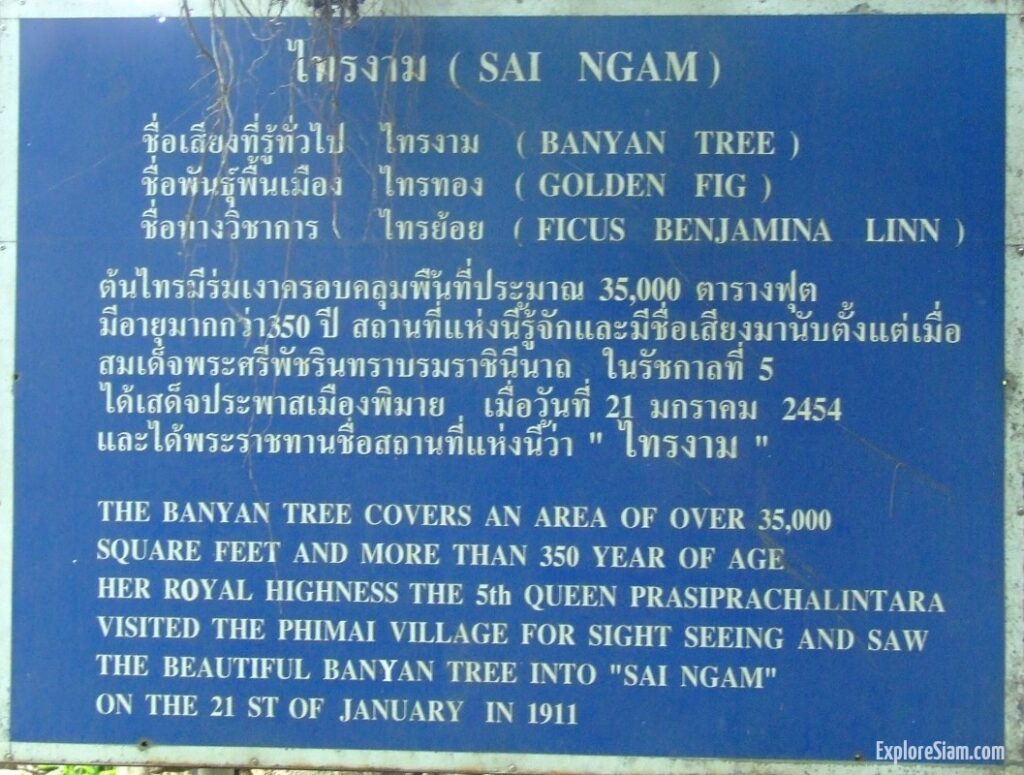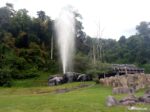Phimai, a town steeped in history and culture, is home to one of nature’s most magnificent spectacles: an enormous banyan tree that stands as a testament to the wonders of the natural world. This colossal tree, often referred to as Phimai’s Botanical Giant, is a destination that captivates visitors with its sheer size and intricate beauty. It is not merely a tree but a sprawling ecosystem that embodies the essence of nature’s grandeur.
Nestled within the serene landscape of Phimai, the banyan tree occupies an entire island, creating a spectacle that is both awe-inspiring and humbling. As you approach, the first sight of its vast canopy takes your breath away. The branches stretch out in every direction, forming a natural umbrella that casts a cool, inviting shade. Beneath this canopy lies a labyrinthine network of roots and trunks, each twisting and intertwining to create a maze-like forest that invites exploration.
Walking among the numerous trunks of the banyan tree, one cannot help but feel as if they have entered a magical realm. The tree’s aerial roots descend from the branches and anchor into the ground, forming new trunks that continue to spread outward. This process has created a complex, almost mystical environment where the line between individual trees and the overarching giant becomes blurred. It’s easy to lose oneself in the enchanting pathways, where sunlight filters through the leaves and casts dappled shadows on the forest floor.

The banyan tree in Phimai is not just a natural wonder but also a symbol of resilience and continuity. Banyan trees are known for their longevity, and this particular giant has thrived for centuries, witnessing the passage of time and the changes in the surrounding landscape. Its presence is a reminder of nature’s ability to endure and adapt, growing stronger and more intricate with each passing year.
Visitors to Phimai’s Botanical Giant are often struck by the sense of tranquility that pervades the area. The rustling leaves, the chirping of birds, and the gentle sway of branches create a symphony of natural sounds that soothe the soul. It’s a place where time seems to slow down, allowing one to connect with the rhythms of the natural world. Many find it a perfect spot for meditation, reflection, or simply enjoying the beauty of the moment.
Beyond its aesthetic and spiritual appeal, the banyan tree is also a hub of biodiversity. The canopy provides a habitat for various bird species, insects, and small mammals, while the roots and trunks offer shelter to countless organisms. This thriving micro-ecosystem highlights the tree’s role in supporting life and maintaining ecological balance. It’s a living illustration of the interconnectedness of all things in nature, where every element plays a vital part in sustaining the whole.
Phimai’s giant banyan tree also holds cultural and historical significance. In many cultures, banyan trees are revered as sacred and are often associated with legends and folklore. They are seen as symbols of wisdom, strength, and immortality. Local traditions and stories about the tree add another layer of richness to the experience, making a visit not only a journey through nature but also a dive into the cultural heritage of the region.
To visit Phimai and stand beneath the expansive canopy of this botanical giant is to be reminded of the beauty and complexity of the natural world. It is an experience that leaves an indelible mark on the soul, a memory of nature’s grandeur that lingers long after the journey ends. Whether you are a nature lover, a history enthusiast, or simply someone seeking peace and inspiration, the enormous banyan tree of Phimai offers a unique and unforgettable experience.
As you walk away from the labyrinth of trunks and roots, you carry with you a sense of wonder and a deeper appreciation for the natural world. Phimai’s Botanical Giant is not just a tree; it is a living testament to the power and beauty of nature, a place where the past and present converge, and where every visit is a new discovery.





